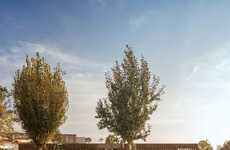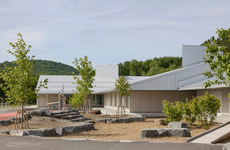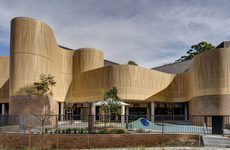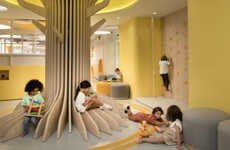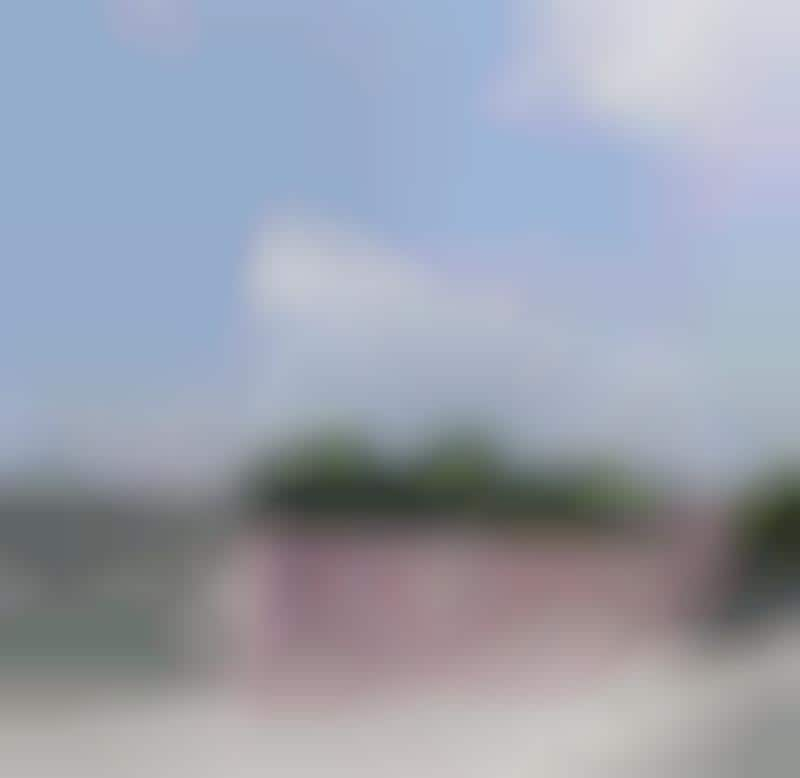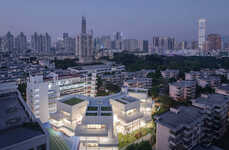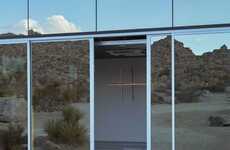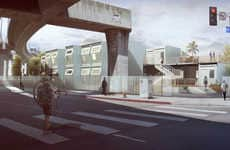
'The Almost Invisible School' Lives Up to Its Name
Joey Haar — March 15, 2018 — Art & Design
References: archdaily
Some architects believe that buildings should limit their aesthetic impact on the surrounding environment, and it seems clear that ABLM Arquitectos, the studio behind 'The Almost Invisible School', adheres to that credo. As its name indicates, the elementary school complex cleverly hides in plain sight thanks to highly reflective paneling that surrounds the entirety of the upper storeys' facade.
The mirrored panels manage to hide the building effectively thanks to its surroundings. On the outskirts of the Spanish town of Salamanca, the building isn't in the vicinity of any other tall edifices. Its walls thus reflect sky and trees almost exclusively, which helps it to seamlessly blend into the natural environment.
Areas of The Almost Invisible School not covered in mirror have a bright, striped design, which is a concession to the child-like sensibilities of the buildings' primary occupants.
Image Credit: Imagen Subliminal
The mirrored panels manage to hide the building effectively thanks to its surroundings. On the outskirts of the Spanish town of Salamanca, the building isn't in the vicinity of any other tall edifices. Its walls thus reflect sky and trees almost exclusively, which helps it to seamlessly blend into the natural environment.
Areas of The Almost Invisible School not covered in mirror have a bright, striped design, which is a concession to the child-like sensibilities of the buildings' primary occupants.
Image Credit: Imagen Subliminal
Trend Themes
1. Mirrored Architecture - The use of highly reflective paneling in architectural design to create buildings that blend seamlessly into their natural surroundings.
2. Invisible Design - Designing buildings that limit their aesthetic impact on the surrounding environment, allowing them to appear almost invisible.
3. Nature-inspired Camouflage - Creating architectural designs that mimic elements of nature, such as using mirrored panels to reflect the sky and trees to blend into the natural environment.
Industry Implications
1. Architecture - Architecture firms can explore the use of highly reflective materials and nature-inspired camouflage to create innovative, visually-integrated buildings.
2. Education - Schools and educational institutions can consider incorporating invisible design concepts to create a harmonious learning environment that minimizes visual disruptions.
3. Environmental Sustainability - The incorporation of invisible design techniques in architecture can contribute to sustainable development by reducing the visual impact of buildings on the natural landscape.
4.2
Score
Popularity
Activity
Freshness

